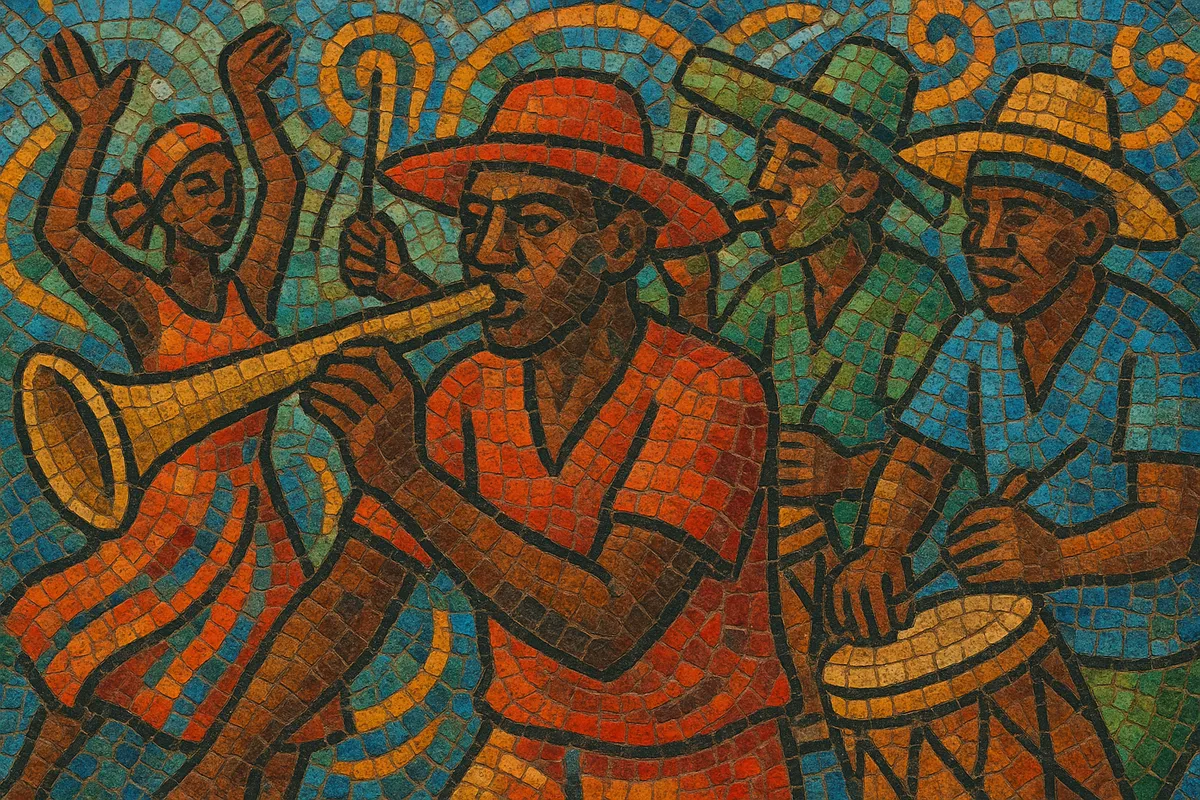Rara is a Haitian processional street music performed mainly during Lent and around Easter, combining Afro-Haitian ritual rhythms, call-and-response singing, and piercing bamboo or metal trumpets called vaksen. Ensembles parade through neighborhoods, creating interlocking rhythmic patterns while dancers and singers respond to the lead calls.
The music is rooted in Vodou ceremonial drumming and West African rhythmic lineages, but it also reflects the island’s colonial history through its parading format and use of portable, high-volume instruments. Lyrics in Haitian Kreyòl range from celebratory to satirical and political, and the sound is defined by cyclical grooves, hocketing horn lines, and a mobile, outdoor performance energy.
Rara emerged in Haiti during the 1800s as part of Lenten and Eastertide processions, drawing heavily on Vodou ceremonial drumming, call-and-response singing, and West African parade traditions. The ensemble format—portable drums, scrapers, bells, and vaksen horns—fit the need for mobile, outdoor celebration and commentary.
Throughout the 20th century, rara solidified as a distinct festival music identified with neighborhoods and bann rara (rara bands). While elite dance forms such as méringue and later compas dominated ballrooms and radio, rara remained the sound of the street and the countryside, where ensembles engaged in friendly rivalry, social critique, and local pride.
In the late 20th and early 21st centuries, Haitian migration helped establish rara scenes in cities like New York, Boston, and Miami. Musicians in the mizik rasin (roots) movement integrated rara rhythms and vaksen patterns into amplified bands, broadening its audience. Contemporary styles such as rabòday also fold rara’s rhythmic DNA into modern electronic production, ensuring the tradition’s continuity and reinvention.
Today, rara is both a seasonal community ritual and a global performance idiom. Ensembles still parade during religious and civic festivals, while concert stages and recordings present rara as a powerful emblem of Haitian identity, resilience, and political voice.


